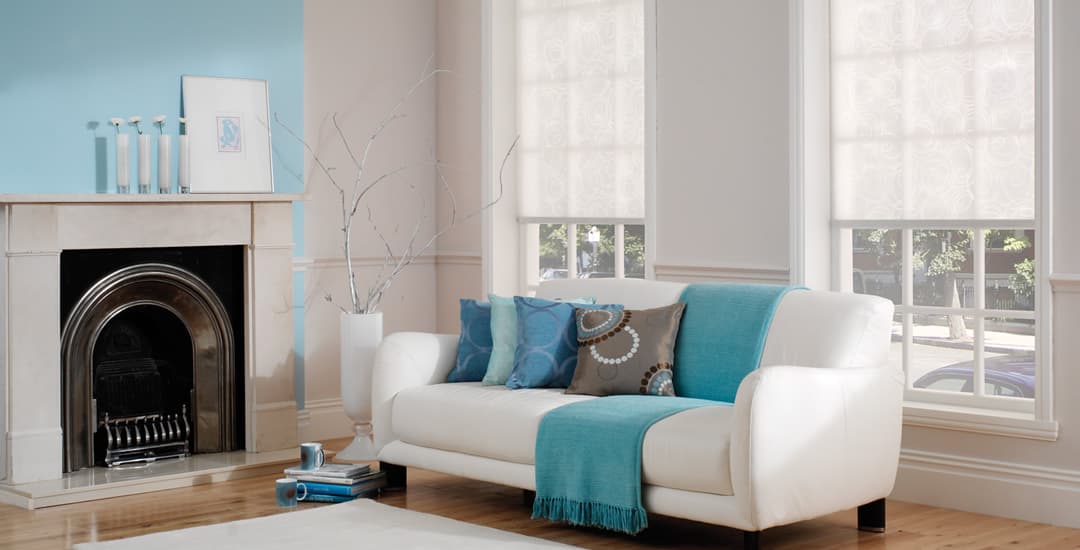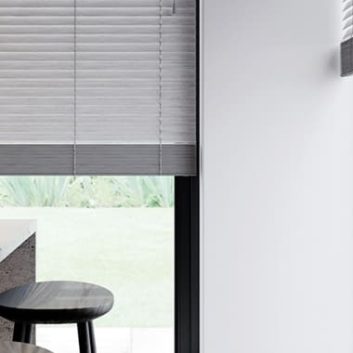
Are roller blinds cheaper than other blinds? In the majority of cases yes, if you’re comparing as close to like-for-like as you can in terms of window size, blind quality, and so on.
The actual cost of individual roller blinds can be really variable though, and they certainly shouldn’t be thought of as the poor relation, or “the blinds you only buy if you can’t afford better.” Roller blinds are very popular not just because they’re comparatively economical to buy, but also because they’re versatile and basically, just… good blinds. Bells and whistles optional.
They come with a few advantages over other blind types for certain applications too, which can supersede cost considerations for many people anyway. They tend to be the most effective blackout blinds when made from blackout fabrics, and if your key criteria is having the widest possible choice of colours and being able to pick from patterns and designs too, roller blinds will nearly always be the winner on that score.
What factors influence the price of roller blinds?
The size of the blind or rather, window it is designed for, whether you want a regular roller blind or the slightly fancier cordless option, if you’re looking for a blackout fabric (which tends to up the cost a little, but not by much) and the quality of the fabrics and materials are all integral factors.
The type of fabric, patterns and designs (particularly if you want designer or say licenced Disney character fabrics) will impact on the price of roller blinds too, as will the choice between readymade roller blinds versus made to measure.
Made to measure roller blinds do tend to be a shade more costly that readymade (although probably not by as much as you might expect), but this is reflected in the quality and longevity of the blind too, and not just your bank balance!
But side by side, both the cheapest/most cheaply made roller blind and the most prestigious/costly roller blind alike are each likely to be respectively cheaper than any other type of blind that you’re comparing them to using as many correlating data points as you have to work with.
Why are roller blinds cheaper than other blinds?
This largely comes down to the fact that roller blinds are about the simplest type of blinds to design and make. They can also be made perfectly well and functionally from inexpensive materials, although naturally there is significant variance in terms of quality, depending where on the price spectrum you decide to lay your chips.
A basic roller blind is made of the fabric itself, a roller tube, a bottom bar for weight, and a cord-controlled operating mechanism. Cordless blinds are a little fancier, with a spring-loaded mechanism.
But compared to other types of blinds like Venetians and verticals, roller blinds are a lot more straightforward to design and put together, which in turn, results in lower overheads and so, makes them the cheapest blinds for the end buyer.
Why are roller blinds cheaper than Venetian blinds?
Venetian blinds can be made from aluminium (which is usually what we mean when we say Venetian blinds without specifying their material) wood, or faux-wood. They consist of horizontal slats that can be tilted to filter light, as well as being raised and lowered fully or partially in the normal way.
All of those horizontal slats plus the rather fiddlier nature of Venetians combined (as well as the cost of materials) mean that Venetian blinds are more costly in terms of materials, more complex to design, and take longer to actually craft than roller blinds; which of course, shakes down in terms of the price.
Venetian blinds are more expensive on average than roller blinds, but the trade-off here is that you have a higher degree of control over filtering (rather than just blocking) light, which may be important if you want to retain the natural light to a room without glare.
Why are roller blinds cheaper than vertical blinds?
Vertical blinds are the type of blinds that have vertically hanging louvres made of fabric strips with weighted ends, held together by a connecting chain along the bottom. These too can be tilted on their axis (vertically this time, in case the name wasn’t a dead giveaway) as well as being opened and closed fully or partially too.
Vertical blinds are more expensive like-for-like than rollers for much the same reasons that Venetians are; the initial design itself, then the creation and assembly of the headrail and internal mechanism that controls the blind, cutting all of the fabric strips to size, and the finishing in terms of weighting the louvres and connecting the whole array.
They’re actually more challenging and time-consuming to pack up for shipment than roller blinds too!
Again though, vertical blinds might be a better pick than rollers if you need to filter light. Another factor to bear in mind is one that can, in some cases, make a vertical blind cheaper than a roller blind for the same window, or make a vertical blind the only available option; this is if you’re trying to buy a blind for a window that’s huge in general, or very wide, or very tall.
For instance, to cover a large window in a modern apartment, wide patio doors, or err, a converted church maybe? In some such situations, a vertical blind will be cheaper than a roller, or you won’t be able to buy a roller blind to fit at all.
Why are roller blinds cheaper than Roman blinds?
Ok so if roller blinds are Lidl, Roman blinds are Fortnum and Mason. What I’m saying here is that Lidl does some absolutely blinding gear (whether you’re into cheese or power tools), but for the superior shopping experience and/or to impress your in-laws, you want Fortum and Mason.
Roman blinds are more expensive than roller blinds; and more expensive than most other type of blind you care to mention too.
Why? Well, they’re fancy, basically. The fabrics used for them are premium, luxury ones (which we all know means “spendy,”) as are the fittings and materials used for the other parts of the blind; and they also require a skilled seamstress to hem them, take care of the draping and gathering, and to create and cut them to a pattern etc. too.
In fact, if you peeked around the corner of our Roman blinds sewing room, you might be forgiven for thinking that the crew were working on a couture gown, and that shows when the blind is in the window; and it also shows in the price of Roman blinds.
Aside from the prestige aspect of things though, the functions and applications of Roman blinds and roller blinds actually have a lot in common.
Are roller blinds always cheaper than other types of blinds?
Moooooooore or less. It’s impossible to compare two things that aren’t actually identical exactly like for like, which needs to be taken into account. For instance, if you need a blind to filter light, well, roller blinds don’t do that with as much precision as other types of blinds, and so they’d be less functional rather than cheaper, as “cheaper” isn’t a factor if they’re not as fit for purpose.
That aside, when it comes to the aforementioned huge, wide, tall, or weird windows I alluded to earlier on in terms of vertical blinds’ eminent suitability, if you cannot get a roller for a specific window, or if it wouldn’t be as suitable (due to say, being so huge and heavy it would be virtually impossible to operate), then a vertical may be cheaper than a roller blind.
Because there is always an “exception that proves the rule,” and when it comes to buying the cheapest blinds for any given task, this is it.




